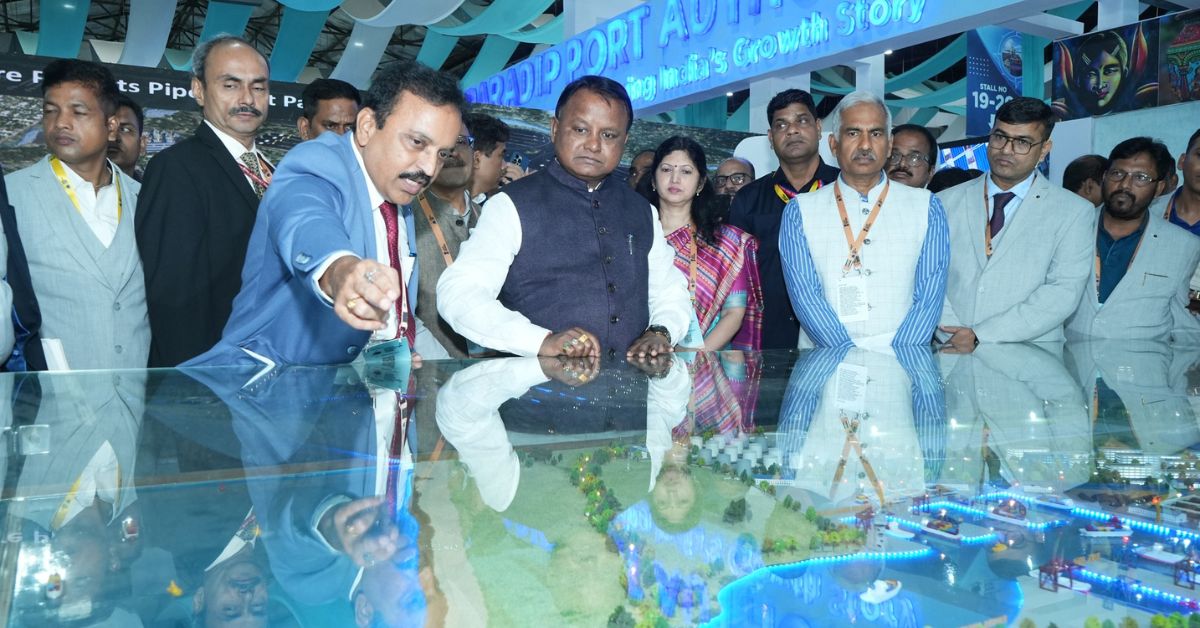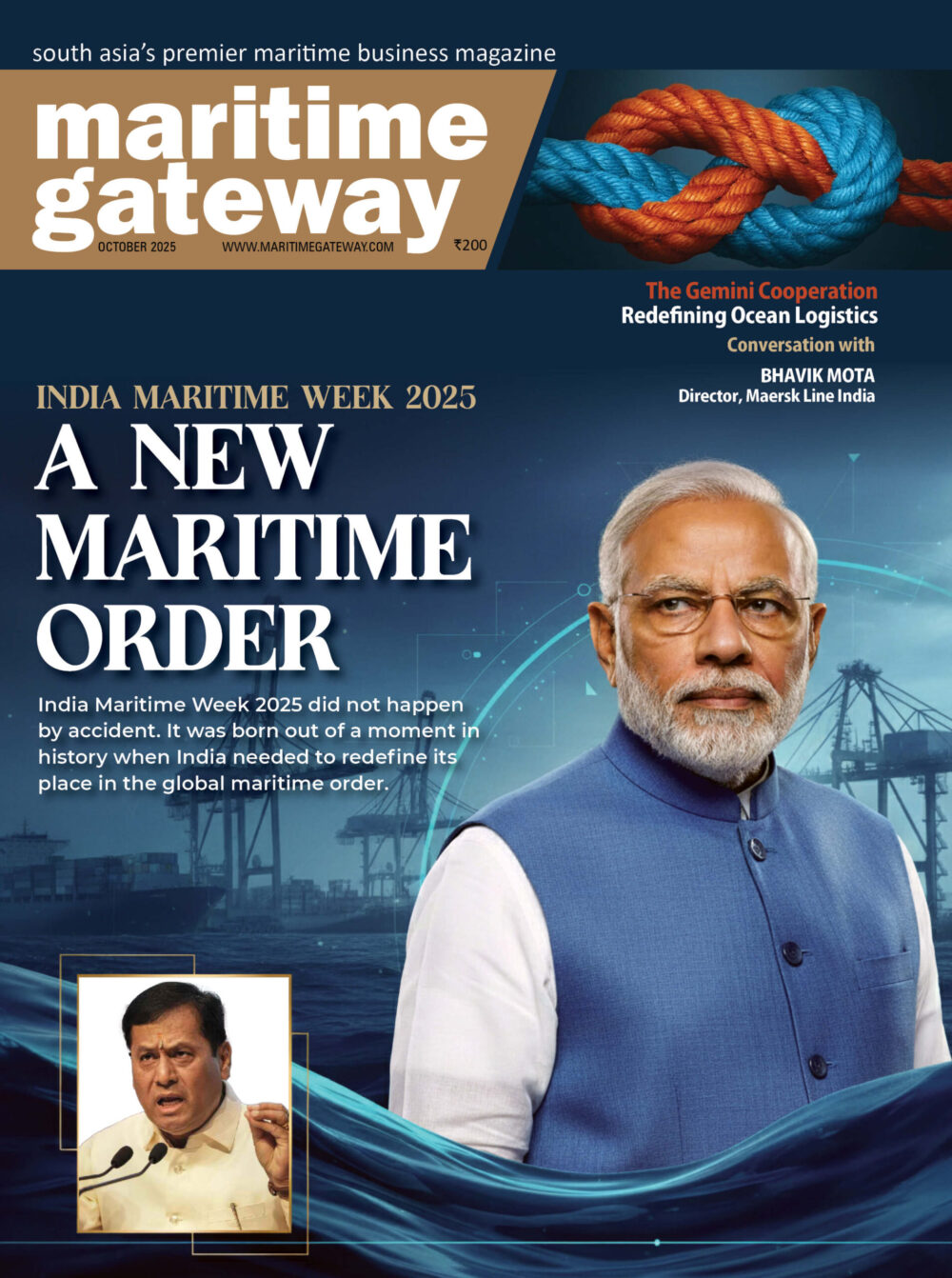A special session dedicated to Odisha’s maritime growth and investment potential was held on Day 1 of the India Maritime Week 2025, highlighting the state’s strategic initiatives to position itself as India’s Eastern Maritime Gateway.
The session began with a welcome address by Usha Padhee, IAS, Principal Secretary, Commerce & Transport Department, Government of Odisha, who emphasized the state’s growing maritime ecosystem and its alignment with India’s blue economy vision.
Manoj Ahuja, IAS, Chief Secretary, Government of Odisha, delivered the context-setting remarks, outlining the state’s policy framework, infrastructure development, and port-led growth strategy that aims to attract global investment.
The keynote address was presented by Bibhuti Bhushan Jena, Minister for Commerce & Transport and Steel & Mines, Government of Odisha. He underscored Odisha’s transformation into a modern maritime hub and detailed how port-led industrialization and green initiatives are driving inclusive growth across the coastal region.
The highlight of the session was the address by Mohan Charan Majhi, Chief Minister of Odisha, who graced the occasion as the Chief Guest.
Odisha Chief Minister during his speech at as chief guest at Odisha sate session at India Maritime Week 2025, outlined an ambitious vision for transforming the state into India’s Eastern Maritime Gateway.
Welcoming dignitaries including Manoj Ahuja (CEO), Trihaman Sharma (Deputy CEO), Usha Padhee (CEO, Banjara Parival Committee), P.L. Haranath (Chairman, Bharatiya Port Authority), and several leading industry figures, the Chief Minister extended his greetings and reaffirmed the government’s commitment to unlocking Odisha’s full maritime and industrial potential.
Highlighting the state’s rapid transformation, he recalled the “Make in Odisha Conclave 2025” as a milestone in the state’s industrial resurgence, signalling a shift from the export of raw materials to high-value, diversified trade.
The Chief Minister emphasized Odisha’s Vision Document 2036–2047, which targets the creation of a $500 billion economy by 2036 and a $1.5 trillion economy by 2047. “Under the guidance of Prime Minister Narendra Modi, Odisha’s maritime infrastructure is being modernized at an unprecedented pace,” he said, adding that the state’s 575 km-long coastline positions it as a natural hub for India’s eastern maritime ambitions.
At the event’s central session on ‘Port-led Development Vision 2047’, he announced plans to increase Odisha’s current port capacity from 80 million tonnes to 500 million tonnes by 2070. The state’s multi-port network will include green hydrogen hubs, deep-sea ports at Avatar and Subala, a captive jetty at Jatada Mohan, and a satellite port at Bahuda with a capacity of 150 million tonnes.
A Coastal Economic Zone and a Shipbuilding Hub at Jandrapur, with an investment of ₹25,000 crore, are also under development, forming part of an $8 billion maritime infrastructure plan.
Sustainability was identified as a key pillar of growth. The Chief Minister noted that Odisha is spearheading India’s transition toward a zero-emission economy, led by projects such as the Gopalpur Green Ammonia Project—the largest of its kind in the country. Aligning with the International Maritime Organization’s 2050 net-zero goal, Odisha aims to play a defining role in global green shipping and energy ecosystems.
To strengthen institutional frameworks, the state has established the Odisha Maritime Board and rolled out the Odisha Port Policy 2025, which introduces innovative initiatives such as Maritime Spatial Planning and Boat Modernization Programs—the first of their kind in India.
He also highlighted tourism and cultural development initiatives, noting that Puri has been elevated to a Municipal Corporation and developed as a global heritage destination, while Chilika Lake is emerging as a major eco-tourism hub with growing investments in cruise tourism and water sports.
Recalling Odisha’s maritime legacy symbolized by the Bali Jatra festival in Cuttack, the Chief Minister said, “Our maritime heritage is not just history—it is a living inspiration for our future. Through modernization and innovation, we are transforming that heritage into a powerful growth engine.”
Concluding his address, he invited investors and industry leaders to partner with the state in building a prosperous, sustainable, and globally connected Odisha, reaffirming the vision of an inclusive blue economy that integrates industrial growth, renewable energy, aquaculture, and coastal tourism.
The vote of thanks was delivered by Bidhan Chandra Ray, OAS, Additional Secretary, Commerce & Transport Department, Government of Odisha, who expressed gratitude to all dignitaries, speakers, and participants for their valuable insights and collaboration.
The session featured initial remarks from Bibhuti Bhushan Jena and Hemant Sharma, IAS, Additional Chief Secretary, Industries and I&PR Department, Government of Odisha. The discussion was moderated by Usha Padhee, IAS, who also serves as Principal Secretary for Housing & Urban Development Department.
A distinguished panel of experts enriched the session with in-depth perspectives on the state’s maritime prospects. The panel comprised:
- P. L. Haranadh, IRTS, Chairman, Paradip Port Authority, Government of India
- Santosh Kumar Mohapatra, IAS (Retd.), Former Chairman, Paradip Port Authority and Dhamra & Vizhinjam Ports
- Subrat Tripathy, President, Business Development, Adani Ports and SEZ (APSEZ)
- Rinkesh Roy, Joint Managing Director and CEO, JSW Infrastructure
- Captain Ashok Mahapatra, Director (Retd.), Maritime Safety Division, International Maritime Organization (IMO)
- Devendra Thakar, CEO, Dhamra Port Company Ltd.
The session underscored Odisha’s commitment to advancing port-led growth, green energy adoption, and sustainable coastal development. With its robust maritime infrastructure, policy support, and investor-friendly initiatives, Odisha is emerging as a pivotal player in India’s maritime future.
Opening the discussion, Santosh Mahapatra underscored the strategic importance of Odisha’s coastline, noting that while India has 28 states, only nine are coastal — making Odisha’s maritime development a matter of national relevance.
He compared Odisha’s coastal potential to Gujarat’s, highlighting its proximity to the northern and eastern hinterland, but cautioned that the state’s open coastline demands heavier infrastructure investment, including long channels, breakwaters, and extensive rail connectivity.
Mahapatra emphasized that minimum port viability in Odisha begins at 20–25 million tonnes, due to high fixed costs, and urged against “overambitious or technically unsound” projects.
He projected that, to meet India’s growth aspirations, Odisha’s port capacity must expand from 202 million tonnes to over 1,000 million tonnes by 2047, and recommended maintaining surplus capacity to prevent congestion.
Calling ports “generational investments,” he advocated for environmentally responsible development, greater use of inland waterways and pipelines, and flexible PPP frameworks. Mahapatra also suggested southern Odisha as an ideal location for deep-sea and petrochemical industries.
Sandeep Tripathi highlighted that “Odisha’s moment has arrived,” driven by its 575 km coastline, strong industrial base, and growing fiscal strength. He emphasized that Odisha and its neighboring states together form India’s industrial heartland, rich in coal, steel, and minerals — creating a natural cargo advantage for port expansion.
He called for integrated connectivity, proposing multi-utility economic corridors linking mineral belts with ports through a mix of road, rail, and pipelines, similar to the Delhi–Mumbai Industrial Corridor. Tripathi suggested developing Port-Led Industrial Ecosystems every 150 km, with sector-specific clusters — petrochemicals at Paradip, coal at Astaranga, and green ammonia and hydrogen industries at Gopalpur and Bahuda.
Outlining a blue economy framework, he urged a balance of economic growth, environmental stewardship, and social prosperity. Tripathi stressed the need to expand maritime education and training, aiming to increase Indian seafarers’ global share from 12% to 45%.
He concluded by positioning Odisha as the next major logistics and export hub, complementing Gujarat on the western coast.
Veteran maritime expert Capt. Ashok Mahapatra described shipping as the “gearbox of the global economy”, emphasizing that without it, “half the world would starve and the other half would freeze.”
He urged renewed focus on shipbuilding and repair facilities in Odisha, calling them potential game-changers for industrial growth and employment. Such investments, he noted, would stimulate ancillary industries and MSMEs, creating large-scale job opportunities.
Capt. Mahapatra advocated for an integrated ecosystem combining ports, shipbuilding, and shipping operations, supported by a dedicated Maritime Board to streamline governance and investor facilitation. He reiterated that true maritime development must drive both industrial growth and livelihoods.
The session concluded with a shared vision of positioning Odisha as a global maritime hub — driving sustainable growth, green energy integration, and inclusive prosperity across India’s eastern seaboard.









